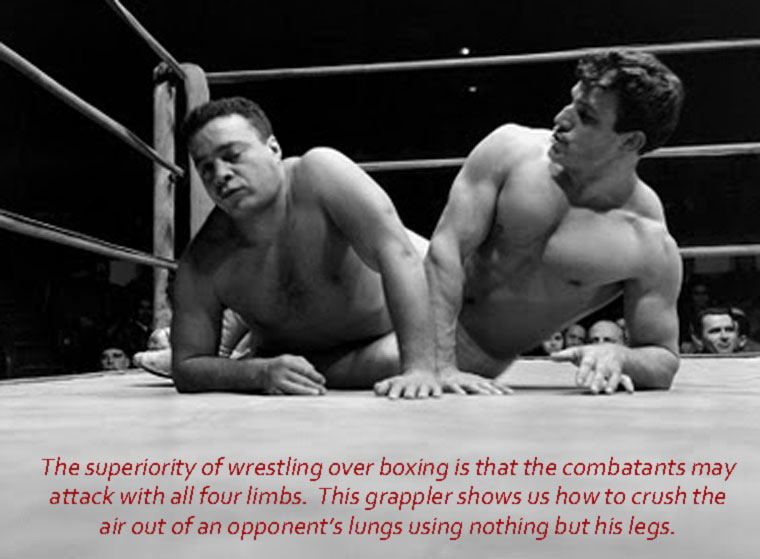
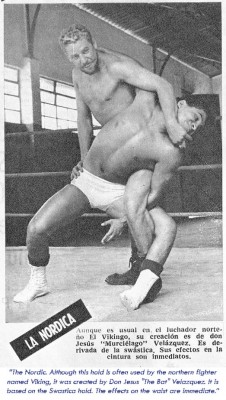 In the classic days of Pro Wrestling, say before 1975, the action came with a delicious believability that doesn’t exist today. Call it “authenticity”. There was a serious no-nonsense quality — a metallic flavor of violence and grit and brutality — which has been replaced by today’s comical, cartoonish performances. Classic wrestling was like chaw — modern wrestling is like bubble gum. The effort to maintain a serious realism in the ring appealed to an older audience and added a masculine feel compared to the silly, campy, hokey style that is popular today.
In the classic days of Pro Wrestling, say before 1975, the action came with a delicious believability that doesn’t exist today. Call it “authenticity”. There was a serious no-nonsense quality — a metallic flavor of violence and grit and brutality — which has been replaced by today’s comical, cartoonish performances. Classic wrestling was like chaw — modern wrestling is like bubble gum. The effort to maintain a serious realism in the ring appealed to an older audience and added a masculine feel compared to the silly, campy, hokey style that is popular today.
This was before “Kayfabe” was broken, before they outright admitted that pro wrestling was actually “Sports Entertainment.” Back then, the wrestlers did their level best to convince us they were for real. Sure, many fans realized the action in the ring was phony and fixed, but the wrestlers didn’t let on. They went about the business of “hurting” each other, breaking arms, drawing blood, scratching and biting as realistically as possible, without the tongue-in-cheek smirk that pervades modern pro wrestling. Say what you will about the lack of athleticism or slow pace of pro wrestling before color television was invented, but you must admit that the realism of the violence got inside the fans’ heads and stirred up emotions because it was all portrayed as being as shocking, true, and dramatic as a kick to the groin.
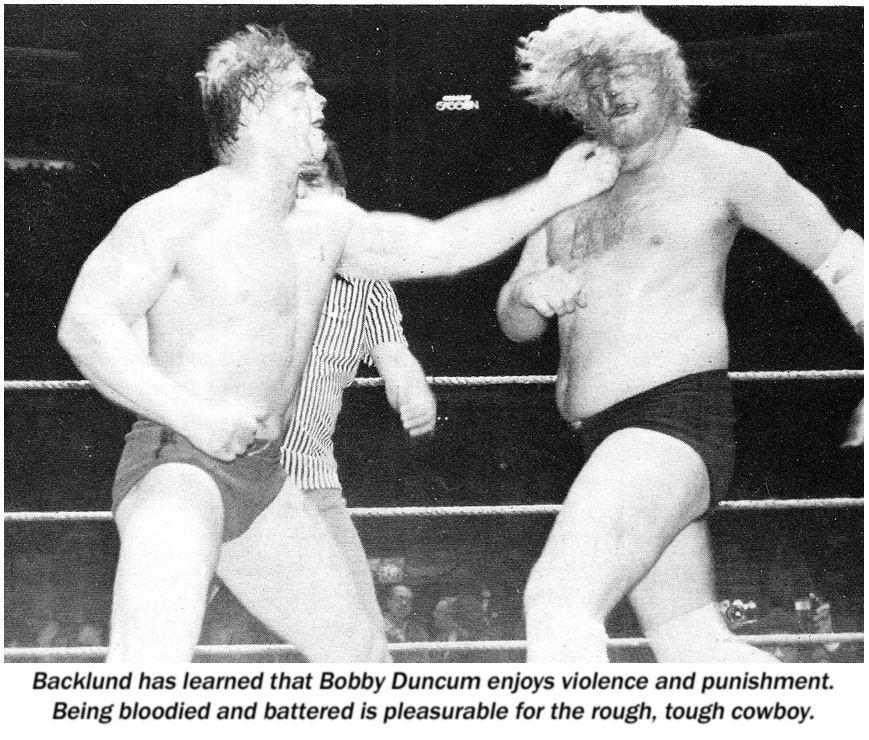
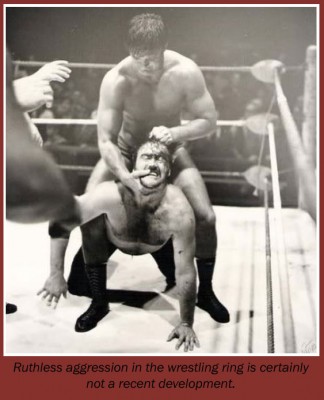 Some people complain that wrestling is getting too graphic these days, that the brutality in the ring is too rough for impressionable viewers to witness. These people must have forgotten the sadistic punishment, gratuitous agony, and animalistic violence that existed in the good old days when we thought it was real.
Some people complain that wrestling is getting too graphic these days, that the brutality in the ring is too rough for impressionable viewers to witness. These people must have forgotten the sadistic punishment, gratuitous agony, and animalistic violence that existed in the good old days when we thought it was real.
If you think rasslin’ is violent now, try rewinding about 30 years and checking out the blood-letting, hair-pulling, suffering, and all-around nastiness. The no-nonsense wrestlers didn’t act out silly skits or portray themselves as baffoons when your Grand-daddy was tuning in and turning on to pro wrestling.
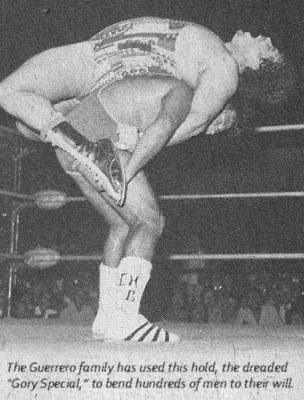 It’s true, the wrestlers were not, on average, as fit as they are today. They generally lacked that Movie-Star quality that seems to be a minimum qualification now-a-days. They didn’t smile as much, or wink as much, or tan as much, or work out as much as the wrestlers do today.
It’s true, the wrestlers were not, on average, as fit as they are today. They generally lacked that Movie-Star quality that seems to be a minimum qualification now-a-days. They didn’t smile as much, or wink as much, or tan as much, or work out as much as the wrestlers do today.
The holds were more basic, the action slower compared to the wild, flipping, run-and-gun offense that is common in today’s MTV era. But the Golden Age wrestling matches had something that modern pro wrestling can not touch: they had authenticity. There was an unspoken agreement between the wrestlers and the fans that the pain, punishment, suffering, and sadism were meant to be real. The policy of authenticity made it very easy for you to play along and accept the truth of the wrestler’s pain and punishment, and those violent scenes had a tendency to etch themselves in your memory forever.

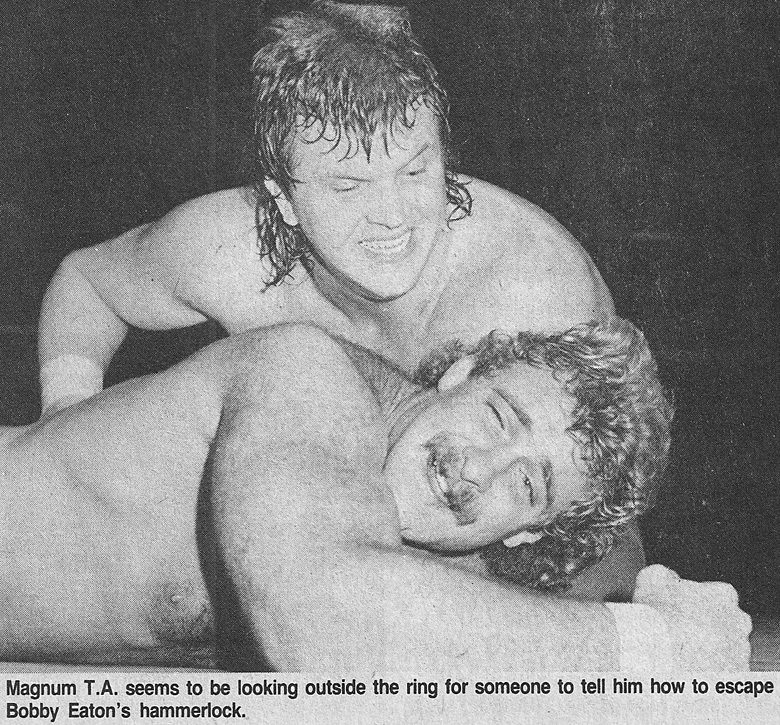
Excellent post–insightful and suggestive of so much of what wrestling means to some of us–especially some of us who remember wrestling 30 and more years ago.
While modern wrestlers may be more muscleloaded than before, they recall my favorite Ginger Rogers line – “There’s not enough chest hair out there to knit a doily.” The old-timers were MEN, brawny working class guys instead of the buffed elitists of today. It’s much easier to identify and get emotionally attached to the bull guy from the docks than the steroid Southern CA prettyboy. They were bigger and tougher than you, but real people. And hairy. As a kid I admired Bruno Sammartino not just for his skill but for that Manly fur, a true SIGN of a big man. Today’s “superstars” even shave their armpits. Call it fashion, but it misses the mark on what was a basic component of pro wrestling – identifying instead of ogling.